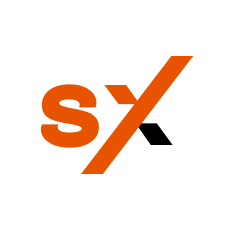From the conventional to the ZUGFeRD invoice
In 5 steps to eInvoice with Perfect PDF® 12
Starting Point | 1 | Conventional invoice |
| eInvoicing is becoming increasingly important due to political endeavours and love of the environment. It will soon be an essential part of the business world in Germany. To simplify the creation of an eInvoice, you will find instructions here on how to switch from the usual PDF invoice without a machine-readable part to the ZUGFeRD invoice. This is fully possible using Perfect PDF 12. Create your invoice in the usual way, e.g. with Word or Excel. We will need this part later for the visual (PDF) part of the eInvoice. | |
Preparation | 2 | Create letterhead template |
| If no letterhead is stored in the conventional invoice, a template can be created with Perfect Print. This template only needs to be created once and can later be inserted into an invoice automatically or with a click. Step-by-step instructions on how to create a Perfect Print project template (e.g. a letterhead) can be found on our website. Tutorial: Create template | |
Conversion | 3 | Classic invoice in corporate design |
| You can now return to Word, Excel or your standard programme for creating invoices. To convert the invoice to PDF format, use the Perfect PDF 12 virtual printer. If the invoice does not yet contain a letterhead, you will find instructions on how to insert a letterhead into the PDF file during the conversion in the “Apply template” tutorial. If a letterhead is already stored in the original application, it is sufficient to save the invoice as a PDF. The “Convert to PDF” tutorial shows how this works in Perfect PDF 12. Tutorial: Apply template Tutorial: Convert to PDF | |
Processing | 4 | Entry of invoice data |
| The creation of the human-readable part is complete. You can now start creating the XML file. An XML file contains structured data that enables automated capture and processing. However, if you use Perfect PDF 12, you do not need to concern yourself with these technical details. Simply enter the invoice data in the eInvoice editor mask and save it. The programme does the rest. Would you like to know how to do this? Read the tutorial. Tutorial: Create eInvoice | |
Finalising | 5 | Finalise a ZUGFeRD-compliant invoice |
| At this point, you should now have two files: the normal PDF file and the XML file. The XML file simply needs to be embedded in the PDF file and saved as PDF/A-3. From this point onwards, the file complies with the European standard (DIN EN16931) for electronic invoices. Optionally, the file can then be stamped and digitally signed. You can find more information on this in the “Create ZUGFeRD” tutorial. Tutorial: Create ZUGFeRD |
